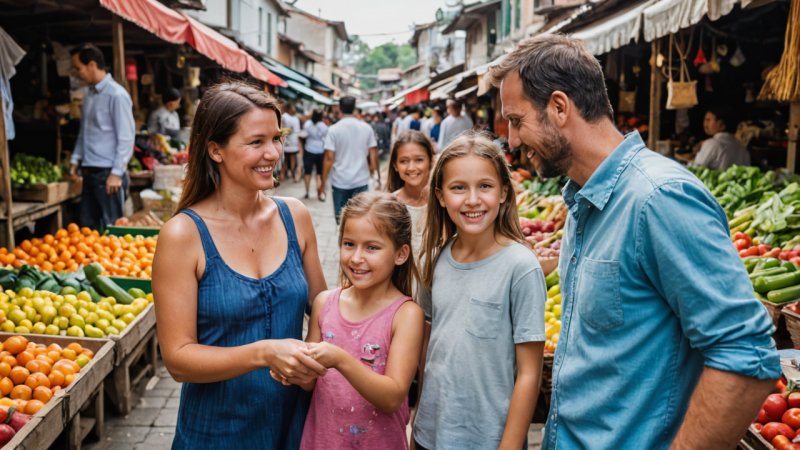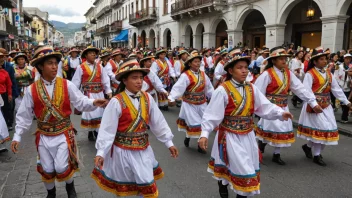Traveling with children can often feel like a race against time. Between packing, managing itineraries, and keeping the little ones entertained, families frequently find themselves swept away in the whirlwind of travel planning. However, an alternative approach known as slow travel is gaining popularity among families looking to create more meaningful experiences while exploring new destinations. This article delves into the concept of slow travel and its myriad benefits for families, particularly when traveling with kids. Slow travel invites families to savor the journey, allowing deeper connections with places and cultures, and nurturing the bonds between family members.
Understanding Slow Travel
Slow travel is a philosophy that encourages travelers to take their time to immerse themselves in a destination rather than rushing from one tourist attraction to another. It emphasizes quality over quantity, allowing families to engage more deeply with local cultures, savor the flavors of regional cuisine, and appreciate the surrounding landscapes. This approach is particularly beneficial for families, as it allows for a more relaxed pace and fosters connections that can enhance the overall travel experience.
The Benefits of Slow Travel for Families
1. Deeper Connections with Destinations
When families choose to slow down, they open themselves up to a greater understanding of their surroundings. Spending more time in one place allows families to:
- Explore local markets, shops, and neighborhoods.
- Engage in community events or festivals.
- Learn about local history and traditions through interactions with residents.
These experiences can transform a mere visit into a rich cultural exchange, making travel more memorable for children and adults alike.
2. Strengthened Family Bonds
Traveling at a slower pace provides families with the opportunity to spend more quality time together. Instead of being preoccupied with a packed schedule, families can:
- Share meals and enjoy cooking together using local ingredients.
- Participate in activities that encourage teamwork, such as hiking or exploring local parks.
- Engage in conversations that deepen understanding and connection.
These moments can create lasting memories and strengthen family bonds, making the travel experience truly special.
3. Reduced Stress and Increased Enjoyment
Slow travel alleviates the pressure of a rigid itinerary. Families can enjoy the freedom to:
- Decide spontaneously what to do each day based on the interests of family members.
- Take breaks when needed, allowing for rest and rejuvenation.
- Explore at a leisurely pace, leading to a greater appreciation of the destination.
This reduction in stress can enhance the overall enjoyment of the trip, making it a more pleasant experience for everyone involved.
4. Educational Opportunities
Traveling slowly offers countless educational experiences for children. Families can:
- Visit local museums and historical sites without the pressure of a time constraint.
- Engage with local artisans and learn about traditional crafts.
- Participate in workshops that teach skills such as cooking or pottery-making.
These educational opportunities not only enrich the travel experience but also foster curiosity and a love for learning in children.
Tips for Embracing Slow Travel with Kids
1. Choose Family-Friendly Destinations
Selecting destinations that cater to families can enhance the slow travel experience. Look for places known for their:
- Welcoming atmosphere towards families.
- Access to nature, parks, and outdoor activities.
- Rich cultural heritage and opportunities for engagement.
2. Plan Flexible Itineraries
While it’s important to have a general idea of what you’d like to do, allow for flexibility in your plans. Consider:
- Creating a daily checklist of must-see attractions and activities.
- Allowing days to be spontaneous, where you can explore based on interest.
- Incorporating downtime for rest and relaxation.
3. Engage Kids in Planning
Involve children in the travel planning process to pique their interest and excitement. Ask them to:
- Research activities and attractions they would enjoy.
- Choose local foods they would like to try.
- Help design the itinerary based on family interests.
4. Prioritize Comfort and Convenience
Traveling with kids often requires extra considerations for comfort. Make sure to:
- Pack essentials such as snacks, toys, and comfort items.
- Choose accommodations that offer family-friendly amenities.
- Plan for transportation that accommodates the family’s needs.
5. Slow Down and Enjoy the Journey
Encourage your family to appreciate the small moments. Take time to:
- Stop and savor the scenery.
- Engage in conversations about the new experiences.
- Take photographs that capture the essence of the journey.
Unique Experiences to Enhance Slow Travel
1. Farm Stays
Staying on a working farm allows families to connect with nature and learn about sustainable agriculture. Kids can participate in feeding animals, harvesting crops, and learning about farm life, creating a unique, hands-on experience.
2. Cultural Exchange Programs
Consider programs that facilitate cultural exchanges, allowing families to stay with local families. This immersive experience can provide invaluable insights into daily life and traditions.
3. Nature Retreats
Spending time in nature can be a rejuvenating experience for families. Engage in activities such as hiking, birdwatching, or stargazing, promoting a sense of wonder and appreciation for the environment.
The Role of Technology in Slow Travel
In today's digital age, technology can play a significant role in enhancing the slow travel experience. Families can use technology to:
- Research local attractions and cultural events.
- Document their journey through photography and journaling.
- Connect with other traveling families or local communities through social media.
However, it is essential to strike a balance and ensure that technology does not overshadow the experience of being present in the moment.
Conclusion
Traveling with kids doesn’t have to mean a frenetic pace and overcrowded itineraries. Embracing the philosophy of slow travel allows families to create deeper connections with their destinations, strengthen relationships, and cultivate meaningful experiences. By prioritizing quality over quantity and taking the time to truly explore and engage with the world around them, families can enjoy a more enriching travel experience. So next time you plan a family trip, consider slowing down and embracing the journey.






